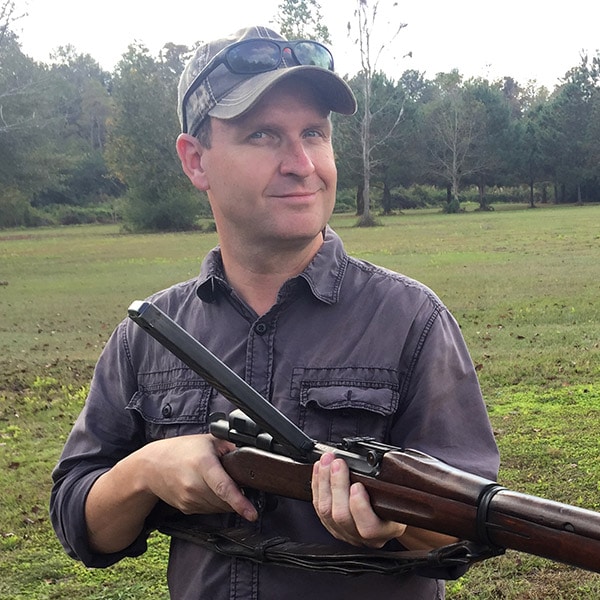Partisans vs. Nazis — Guns of the Via Rasella Ambush
July 19th, 2023
7 minute read
While a broad and diverse variety of small arms were used in the Second World War, we typically only think of a list of “usual suspects” when imagining the struggle for Europe. The M1 Garand, the MP40, the Lee-Enfield, the MG42, and the M1911A1 are the guns that come to mind first and foremost.
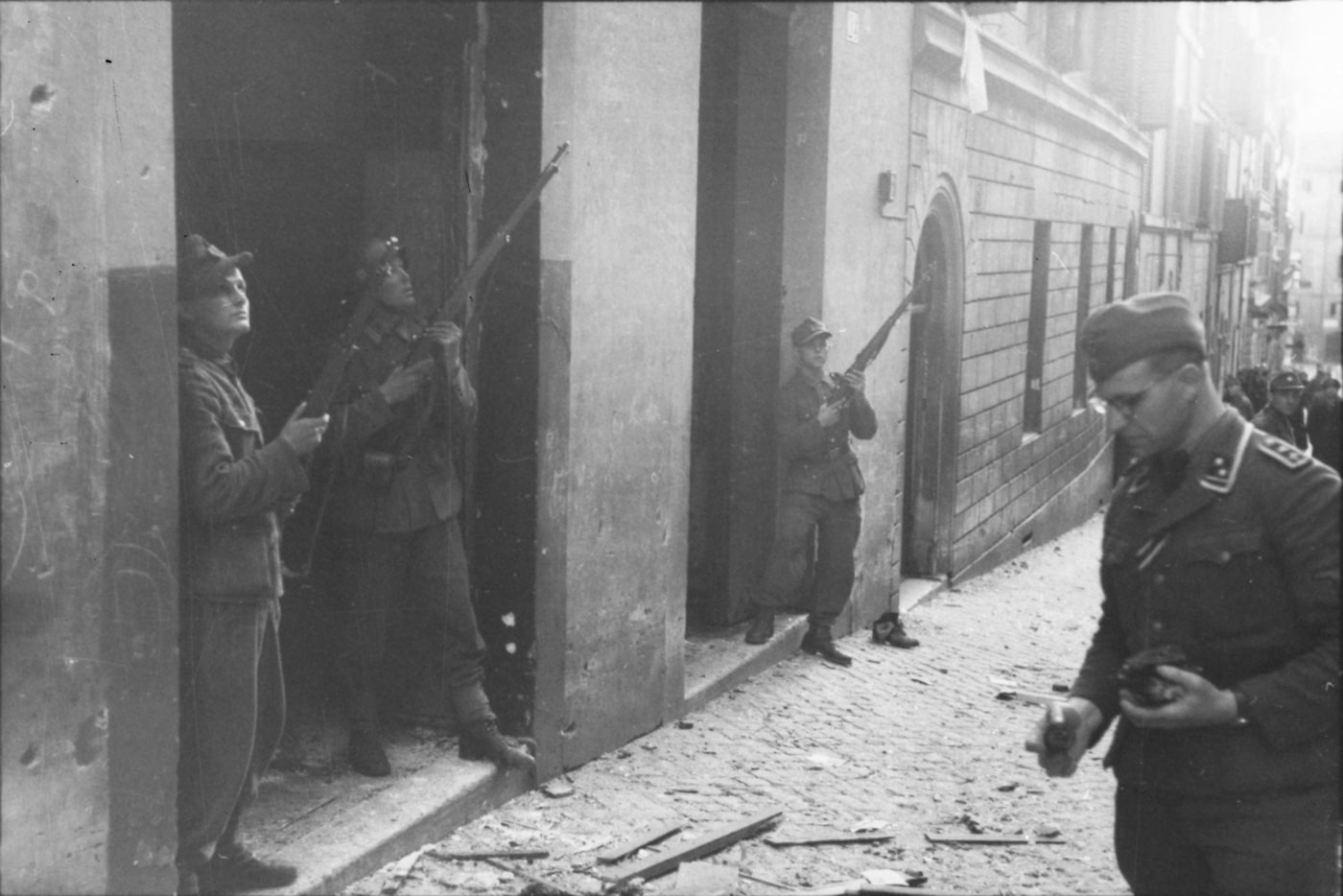
Rarer firearms show up from time to time in photographs and motion picture film footage, but the uncommon guns remain obscure because we see less of them. This is why archived photos and footage are important documents that show us what was being used and where. Photos and video footage recording the wartime use of obscure examples of World War II firepower are worth paying special attention to.
An incident occurred in occupied Rome on March 23, 1944, during which a fascinating assortment of obscure World War II weapons were captured on film. Because of the presence of a German Army Kriegsberichter (War Correspondent) named Lutz Koch who shot about a dozen photographs, the guns that were a part of the incident can be easily observed and identified.
The Ambush
It all happened on the Via Rasella, a narrow, 850-foot-long cobblestone street leading uphill from the Via Del Traforo to the Palazzo Barberini in Rome’s Municipio I district. Shortly before 4:00 pm, 156 men from the 11th Kompanie of the 3rd Battalion of Polizeiregiment “Bozen” began to climb the Via Rasella. Although they did not know it at the time, they were walking into an ambush set by partisans in the Italian resistance.
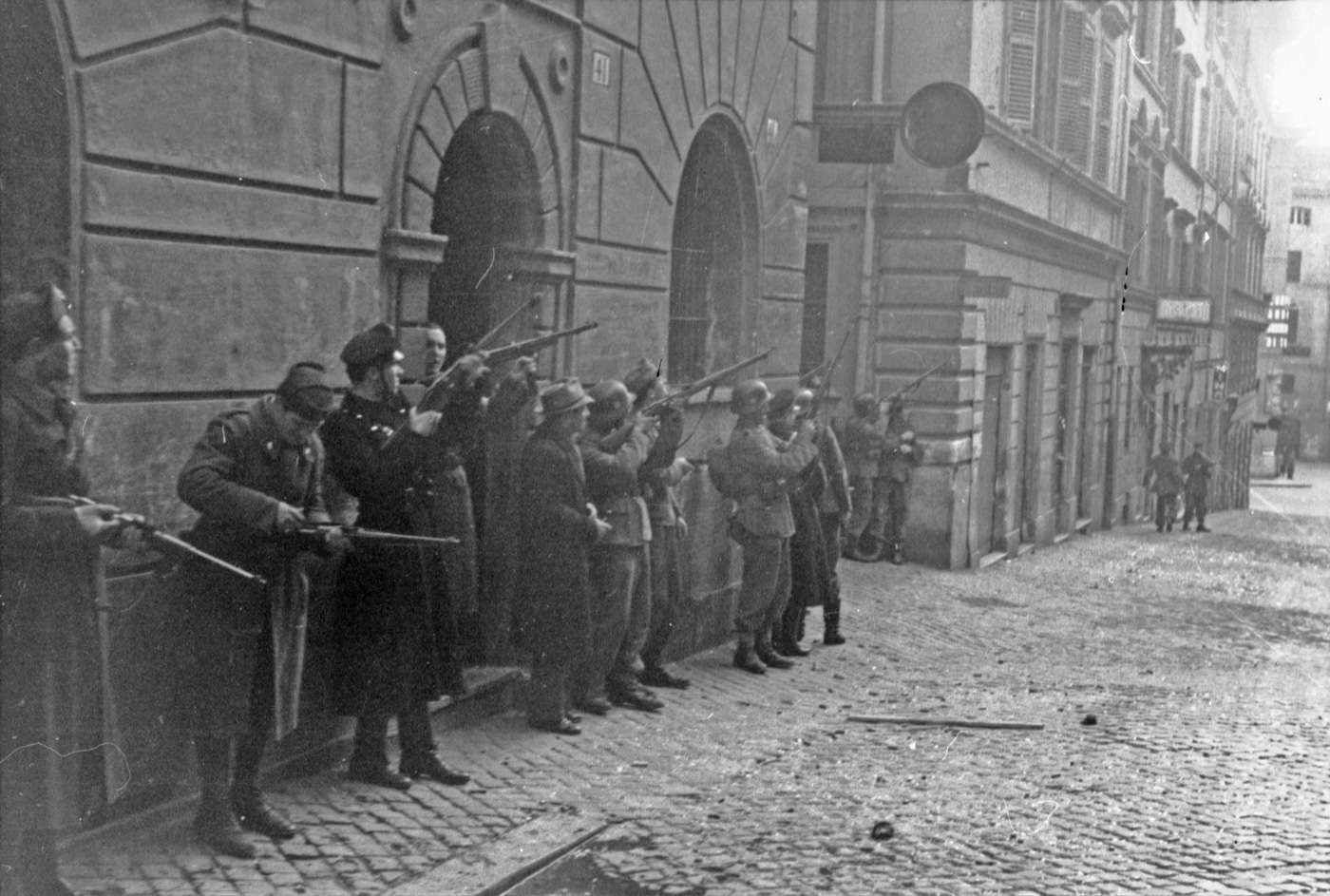
Proceeding through the intersection with the Via del Boccaccio, the column began passing an unexceptional rubbish cart along the road. The cart did not arouse suspicion before an improvised explosive device concealed in it exploded violently, ripping into the column of troops.
As the smoke cleared from the explosion of the bomb, eleven members of a Roman resistance group known as the Gruppi di Azione Patriottica (Patriotic Action Group or GAP) launched a sharp but brief rear guard attack. Italian fighters ran out into the middle of the Via Rasella from concealed positions along the Via del Boccaccio and opened fire on the survivors of the 11th Kompanie with pistols. Three more GAP members contributed gunfire from the top of the hill at the Via Rasella’s intersection with the Via delle Quattro Fontane. Then, after only a few seconds, the partisans disappeared into the cityscape.
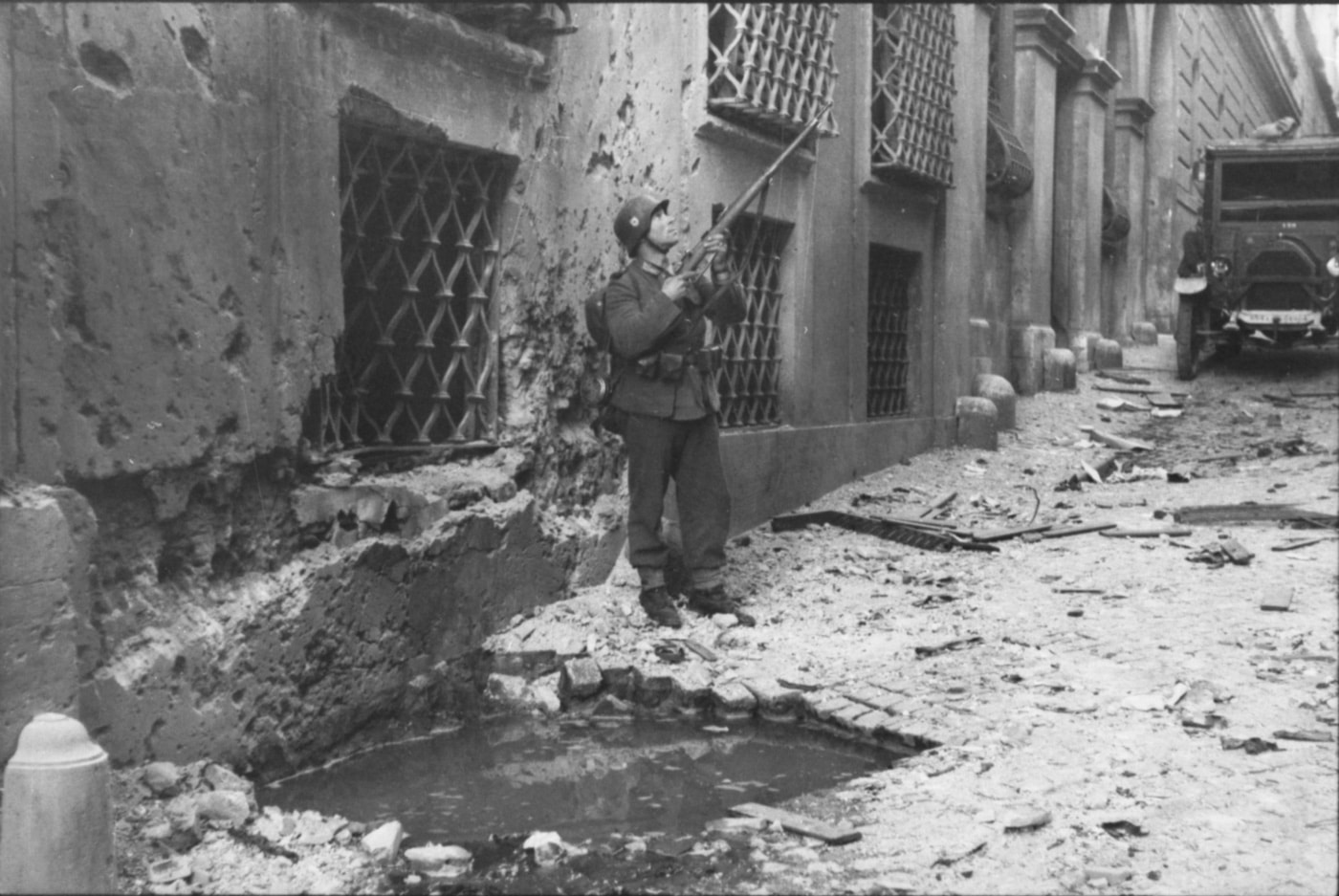
Just like that, the whole thing was over. The bodies of 28 dead and over 100 wounded military policemen littered the Via Rasella. Five more members of the Polizeiregiment would ultimately die due to wounds received during the attack. None of the partisans were injured during the Via Rasella attack.
Immediate Response
Reaction to the Via Rasella attack was swift and brutal as the survivors of the 11th Kompanie began shooting indiscriminately in the direction of the Via del Boccaccio. Assuming that some of the shots had come from one of the windows on the upper floors of the building on the corner, they directed rifle and submachine gun fire at all of them.
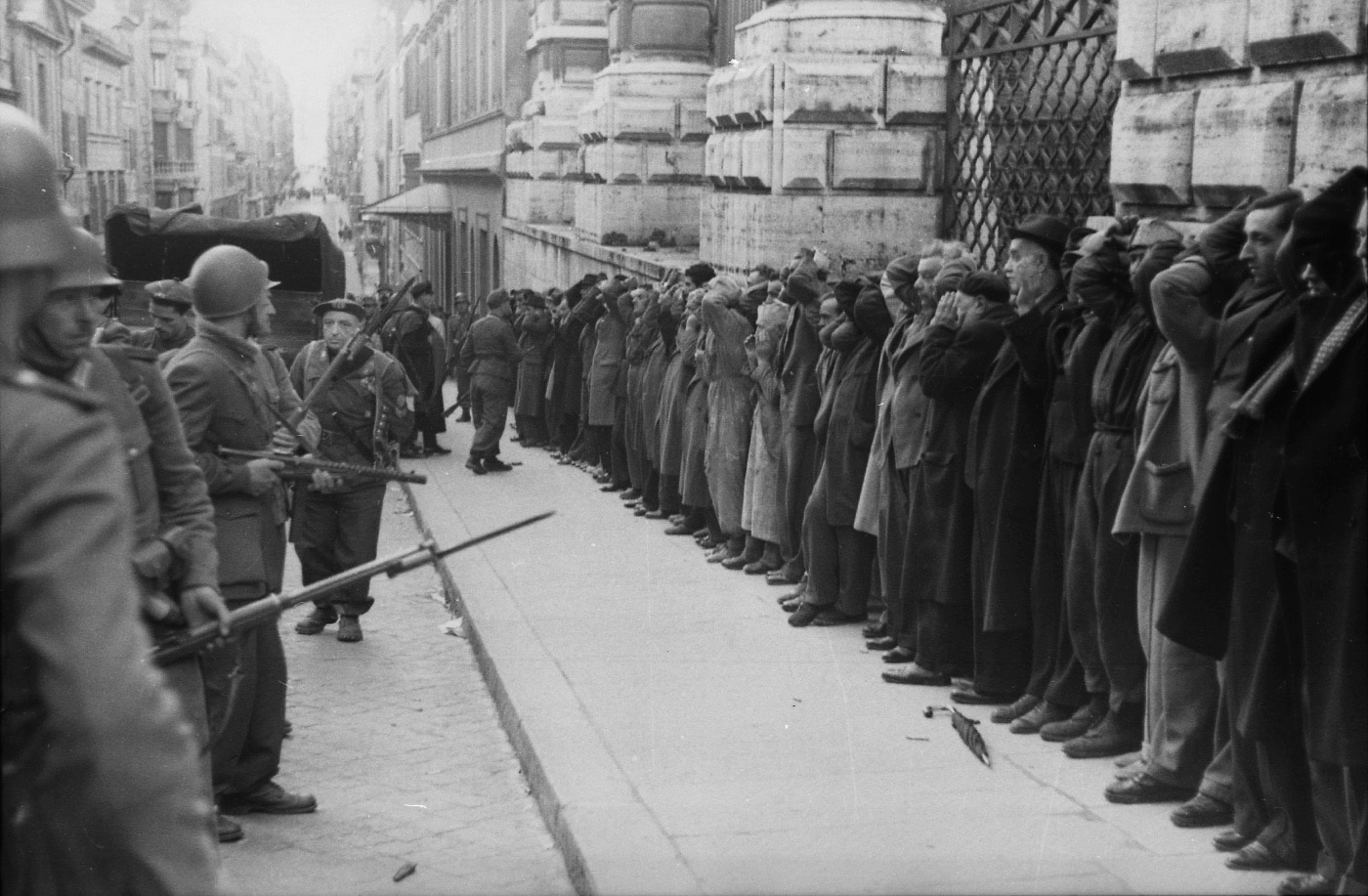
As those shots were still being fired, Koch began taking photographs at the scene. He documented the damage caused by the bomb, the debris it tossed into the street, and a mixture of troops from 11th Kompanie and policemen from the Polizia dell’Africa Italiana (PAI) and the Guardia di Finanza (GdF), and the Regio Corpo di Pubblica Sicurezza (PS).
In these initial photos taken on the Via Rasella itself, three firearms can be seen: the 9mm MAB 38 submachine gun, the 9mm P-38 pistol, and the 6.5×52mm Model 1941 Carcano rifle.
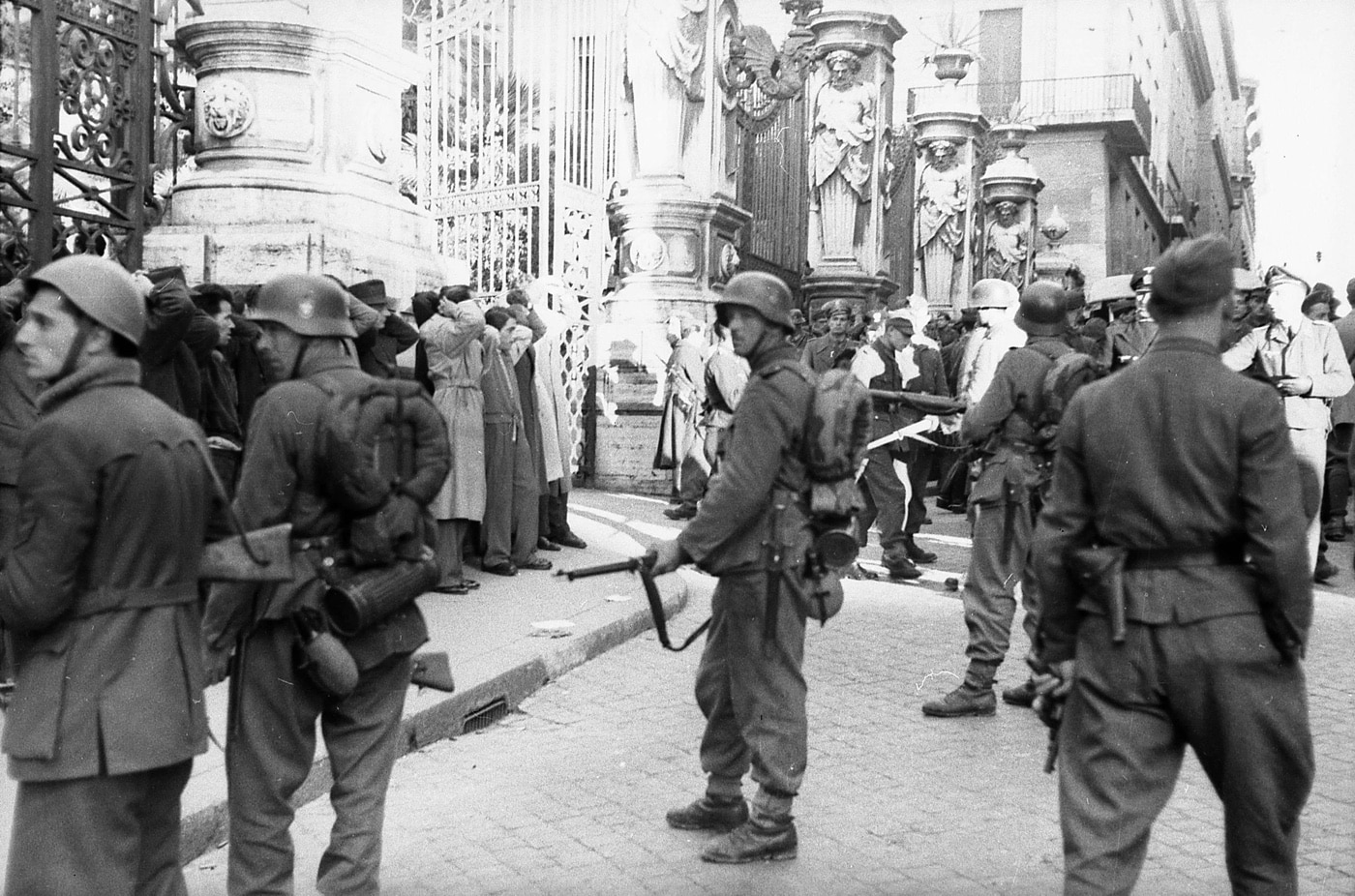
When first adopted more than five decades earlier, the Carcano had been one of the most advanced rifles in the world because it provided the Kingdom of Italy with a six-shot smokeless-powder repeater. The original 50.6-inch-long Carcano Model 1891 rifle served through the Boxer Rebellion, the Italo-Turkish War, and World War I, but then during the Mussolini era the modified Model 1941 improved the design. It retained the same action and magazine as the old Model 1891 rifle but was equipped with a four-inch shorter barrel and a carbine-style adjustable rear sight assembly. Model 1941 Carcano rifles are conspicuously present in most of Koch’s photographs taken on the Via Rasella immediately after the attack.
As the survivors of the 11th Kompanie continued shooting toward windows at the corner of the Via Rasella and the Via del Boccaccio, the curtain rose on another drama at the top of the hill on the Via delle Quattro Fontane.

Kriegsberichter Koch soon was working his way up the street when he encountered a stop-and-search operation just outside the gates of the Barberini Palace. There, Polizia dell’Africa Italiana, Guardia di Finanza, Questure di Roma, and Carabinieri officers working alongside troops of the 11th Kompanie had lined up a group of about 75 Roman men. The troops were holding the Italian citizens at gunpoint.
The images that Koch captured on film during the minutes that followed showed more uncommon firearms. Included in the photos were additional MAB 38 submachine guns and Model 1941 Carcano rifles.
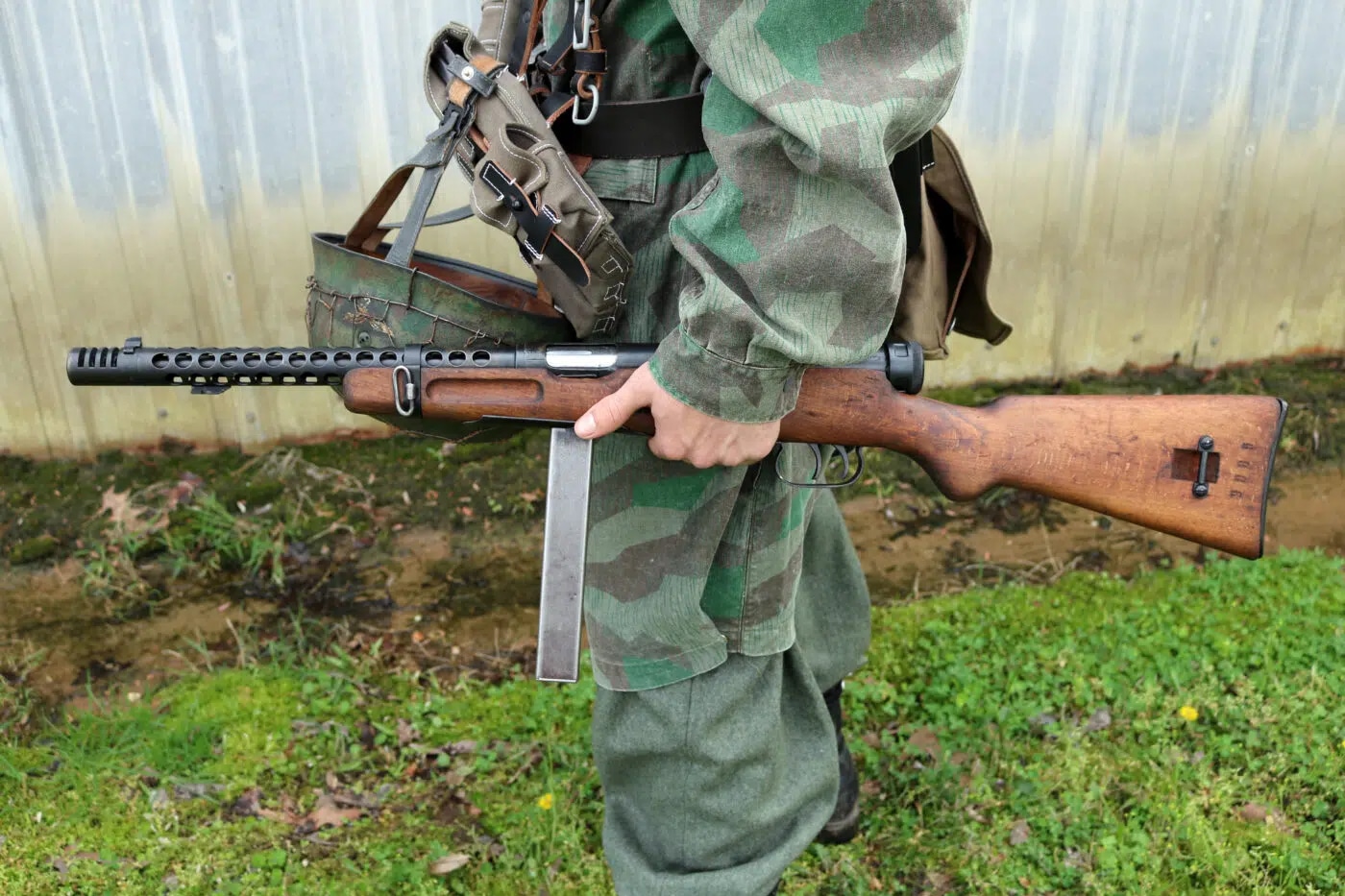
Several other noteworthy Axis firearms can also be seen. A single Carcano Moschetto Modello 1891 with its distinctive 18″ pencil barrel and folding bayonet, shows up in one photograph. This provides a reminder that this variant of the Carcano saw widespread use during the Second World War. First adopted in 1893, the Moschetto Modello 1891 gave the Italians a lightweight, compact, and more practical Carcano with a modest 36″ overall length that was more appropriate for cavalry and mechanized troops not needing a full-length rifle.
The other bolt action service rifle physically present during the dragnet operation near the palace was none other than the incomparable German Kar98k Mauser. In addition, two versions of the long-serving Pistola Rotazione Sistema Bodeo in 10.35×22mm Rimmed (10.35mm Ordinanza Italiana) show up in Koch’s photos.
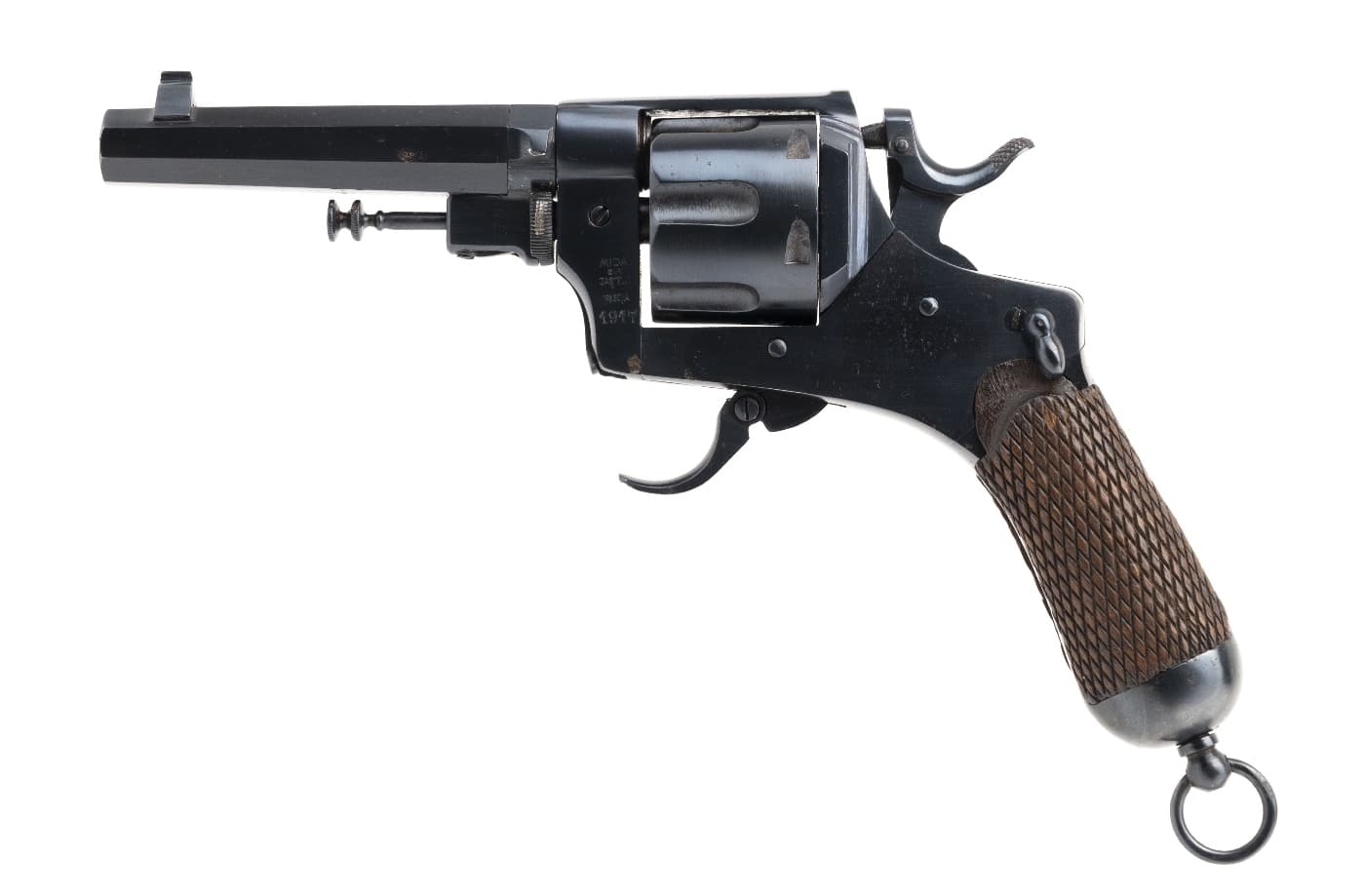
A six-shot, single-action/double-action revolver, the Bodeo had been around for more than 50 years. The old workhorse was known for being reliable and simple. The first Bodeo seen at the site of the round-up was a Tipo Ufficiali (“Officer’s Model”) with a 4.53″ barrel and a trigger guard. The other was a Tipo Truppa (“Enlisted Model”) with the same length barrel, no trigger guard, and a distinctive folding trigger/safety.
These guns played a central role in presenting the intimidating police presence that characterized how the city of Rome was being controlled under German occupation. Despite all that firepower, the Roman resistance represented a real danger because it could strike anywhere and anytime.
Lasting Impact
The Via Rasella ambush on March 23, 1944, was the largest partisan attack carried out in occupied Italy. It came at a complicated time in the war. Allied forces were closing in on Rome from Monte Cassino to the southeast and from the Anzio/Nettuno beachhead to the south.
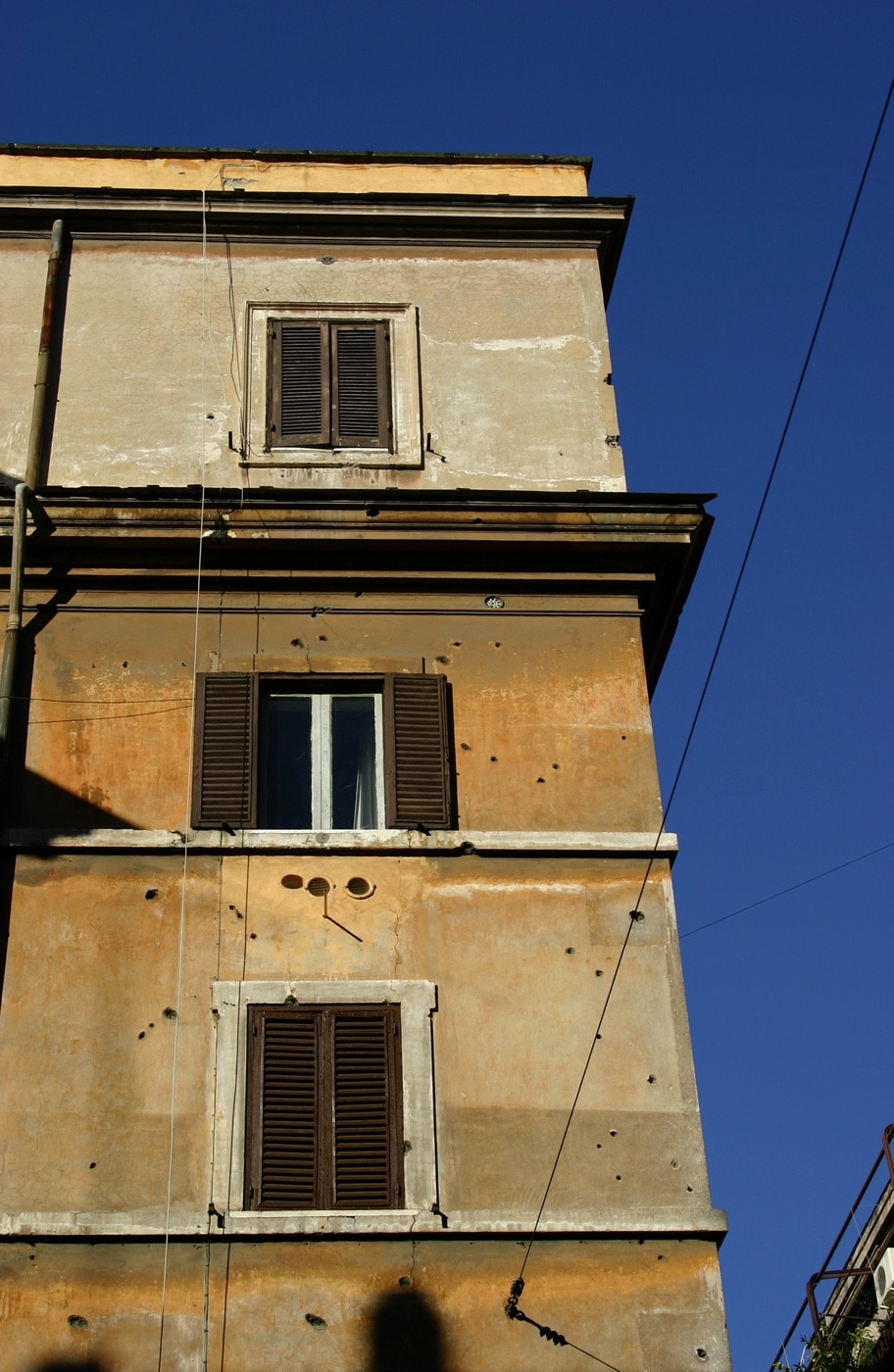
Even with Allied troops taking ground from the Nazis in Italy, the German occupation of the Eternal City was still strong. Consequently, the liberation of Rome was still more than a month away.
Koch’s photos of the aftermath of the Via Rasella attack documented the insistent grip of Germany on Rome while also showing the vulnerability of the occupiers to an insurgency. For firearms historians, the photos also document the assortment of guns that were used on the streets of the city in early 1944.
Reprisals
Luftwaffe Generalmajor Kurt Mälzer was the German Armed Forced Commandant in Rome. With the direct authorization of Adolph Hitler, Mälzer ordered the execution of ten Italians for each of the soldiers who had been killed.
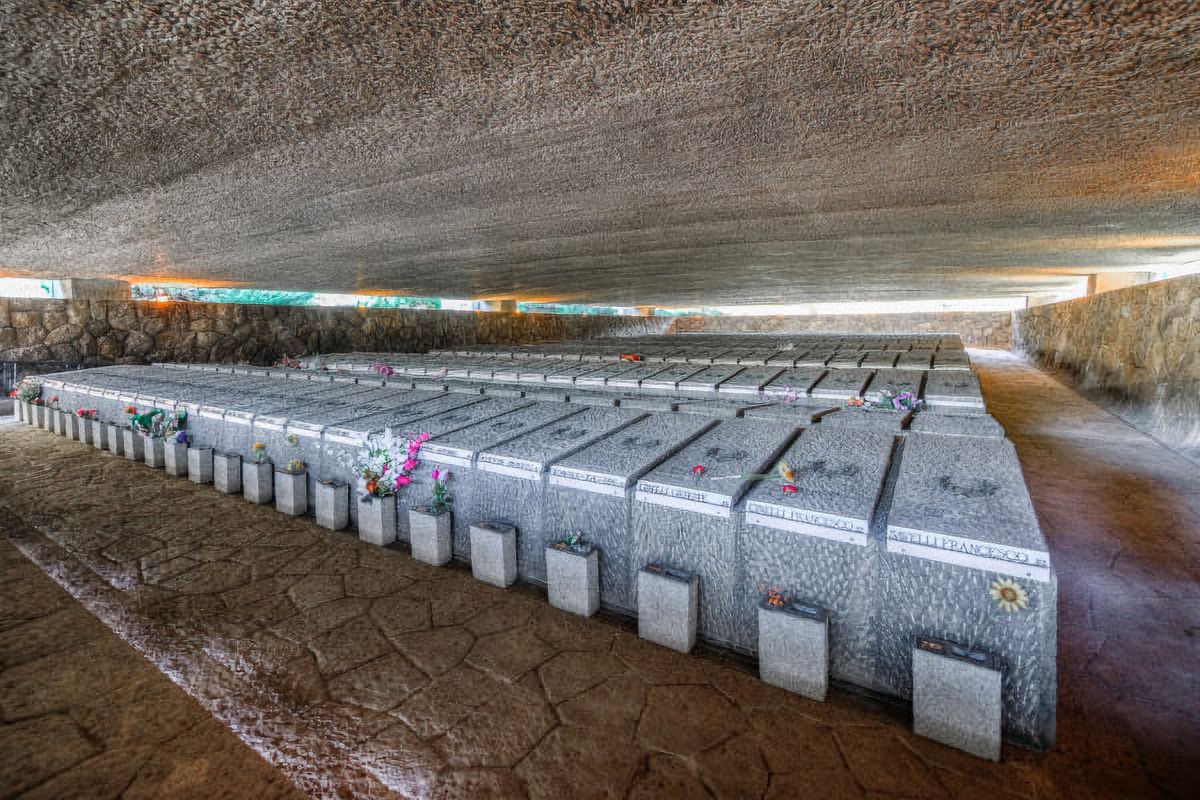
The day after the Via Rasella ambush, a total of 335 Romans in German custody for other crimes — from spying to being Jewish — were taken to an abandoned quarry on the outskirts of Rome. As young as 15 and as old as 70, they were led into the abandoned tunnels and caves to be executed with a shot to the back of the head. The majority of those murdered were civilians and had no part of the resistance movement.
When the atrocity was complete, German engineers collapsed the entrances to hide the murders. Known as the Fosse Ardeatine massacre, the site is now a memorial with 336 tombs: 335 for those that were murdered there and an additional empty tomb to commemorate all who died at the hands of Nazi and Fascist forces in Italy.
Editor’s Note: Be sure to check out The Armory Life Forum, where you can comment about our daily articles, as well as just talk guns and gear. Click the “Go To Forum Thread” link below to jump in!
Join the Discussion
Continue Reading
Did you enjoy this article?

 316
316





